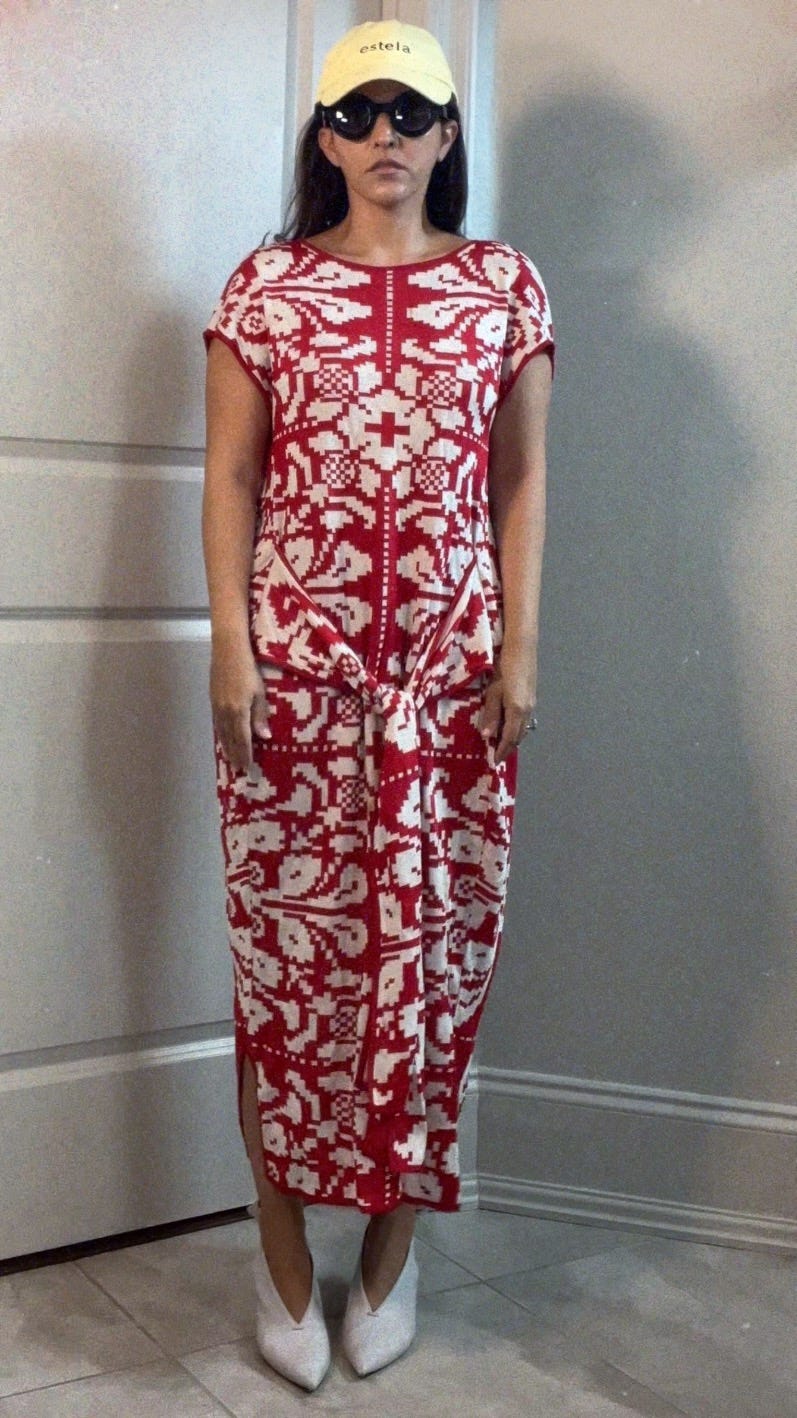Negotiating fragmented identities through clothing
+ some creative pragmatist-friendly fits using Colombian brands from my closet
The one thing I am certain about personal style is its inherent ability to tell our story in the most nuanced way possible. In my case, personal story has been intertwined with the quest to capture an elusive, ever-evolving identity as a woman who has spent almost half of her 41 years on the Caribbean coast of Colombia and the other half at various points along the East Coast of the United States. For you, the fragmented identities might be something completely different—a multi-hyphenated career, a disconnect between how you look on pictures and how you see yourself in the mirror, or like me, a move to a different place from where you were raised that forces you to use fashion as a tool to adapt to a new context while preserving aspects of your origins. At the end of the day, we are all trying to negotiate something, to integrate our split selves through clothes, embracing rather than simplifying our complexities.
When I lived in New York as a 30-year-old creative working in advertising around 2012, my options to integrate my immigrant self were either to become a Caribbean chic walking extravaganza or a caricature of an Olsen sister. I chose the latter and in the process, made myself invisible. My logic was that I was not going to be taken seriously at work showing up in ruffles and all things considered “Latin american” so what I did was lose as much weight as I could to reduce my 40-inch hip circumference, get a Céline tote bag, and buy an Alexander Wang dress (what I considered the epitome of normcore.)
I was indeed taken seriously at work. I got my boss’ respect. I got a raise. I got a promotion. I also got panic attacks, which I partly attribute to the long work hours, extreme fitness regimes, and the complete shock of moving to New York and trying to build my identity from scratch. I eventually slowed down, increased my caloric intake, got my hips back, got a prescription for Prozac which I had to stop when I got pregnant with my first daughter, and restarted it when I moved back to Florida two months after she was born.
But whether in New York or Florida, the question remains the same: How do I tell my story as a Latina immigrant without perpetuating this palatable idea of Latin America as a dreamland to be discovered, a postcard of beautiful palm trees and colonial streets? Without only resorting to ruffles, colors, and prints? How can I tell my Latina story through clothes without exoticizing myself?
My response has been to start looking at Latin American designers who interpret our stories not as a monolith but through a sensitive and nuanced lens. Incorporating these designers into my wardrobe and balancing them with my creative pragmatist principles is an exercise I practice often. I am visiting Medellín soon to discover some new designers at Colombiamoda (stay tuned,) but in the meantime, I’ll leave you with some outfits where I wear pieces from Colombian designers I admire, pieces that have spoken to me and helped me articulate my story in a language we can hopefully all share, understand, or relate to.
Kika Vargas
Yes, Kika does ruffles. And balloon sleeves. But there is something statuesque about Kika’s volume that reads very avant-garde to me. Kika is based in Bogotá but you can find her designs on most online retailers. I got this dress for a NY black tie wedding where I knew the crowd would range from UWS wall street professionals to miss universes. The feeling I was after? Open yet cocooned.
Papel De Punto

I spotted Papel de Punto sometime around 2016 and I was drawn to the ample silhouette, strong lines, and cocooned shapes. It’s been almost 10 years since I visited their showroom and got myself a few pieces. What is beautiful is that every time I wear them, I find new ways to fold them, tuck them, and wrap them around my body.
3. Miguel Mesa Posada

Miguel Mesa Posada is a designer from Medellín currently working in Colombia as a consultant for LVMH and also as a consultant-researcher for Latin American fashion brands. With studies in fashion and textile design, anthropology, and now in management of fashion and luxury, Miguel describes his practice “in the intersection between design, social sciences and management, consisting of rigorous academic assemblage of concepts and a meticulous technical approach.”
Nothing much to add. A genius, in my opinion.

4. Pepa Pombo

I was immediately drawn to Pepa Pombo’s collection around 2015 for the way she treated nature motifs with a futuristic, almost pixel-like approach. The unconventional pattern combined with the knitwear fabrication instantly makes the dress a creative pragmatist staple: classic yet modern and chill.

Johanna Ortiz

You may have heard about Johanna ortiz from her famous and (over-imitated) Tulum top. Also for her palm tree prints but where I think she excels the most is in the way she does texture. This skirt is a great example and one I find myself wearing when I want to add interest to an all neutral look.








So well written! I do relate with the need to camouflage in a new culture as an émigrée. And, also, any Florida stay, short or long, needs an anti-anxiety prescription!
You wear and write about these designers so beautifully!